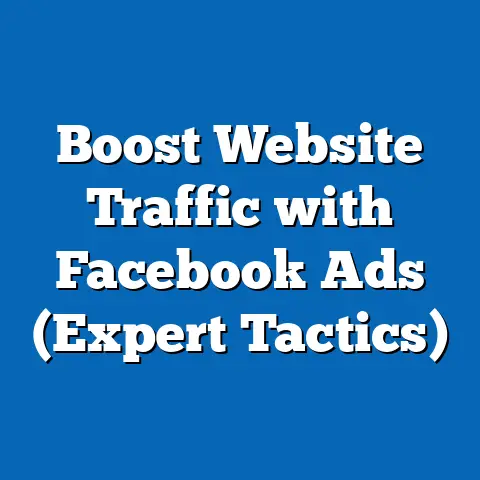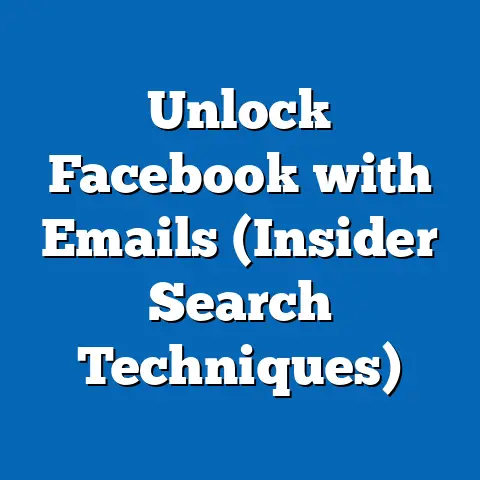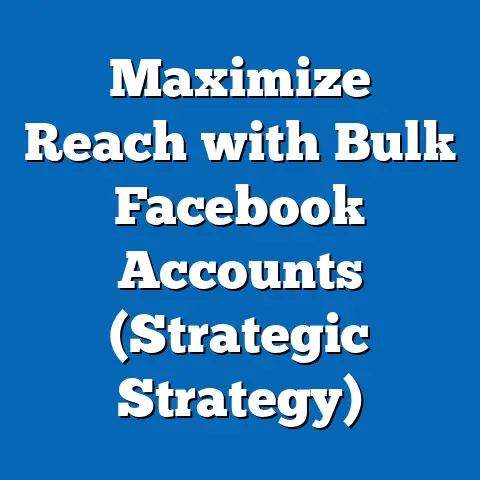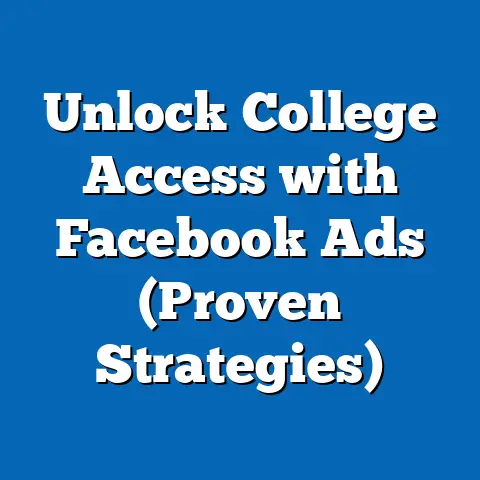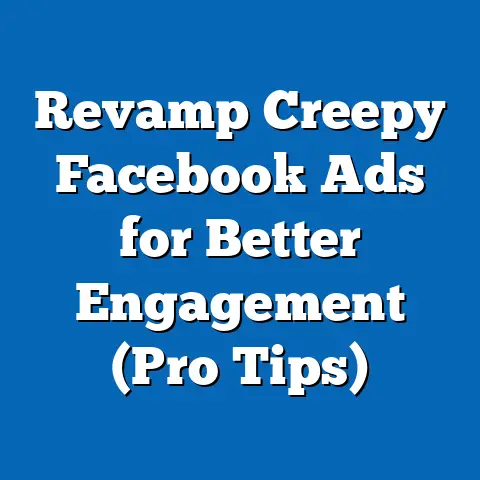Unlock Chrome Block Facebook Ads (Master Strategy)
In the ever-evolving world of digital marketing, the landscape is constantly shifting. Social media advertising, particularly on platforms like Facebook, has revolutionized how businesses connect with their target audiences. I’ve witnessed firsthand how businesses of all sizes leverage Facebook’s powerful targeting capabilities to reach potential customers with unprecedented precision. However, this transformation hasn’t been without its challenges. As consumers are bombarded with more and more ads, they’re increasingly turning to ad-blocking technology, like those readily available for Chrome, to reclaim their online experience. This creates a significant hurdle for marketers.
Understanding Facebook Ads
Facebook ads are a core component of social media marketing, allowing businesses to reach a vast and highly engaged audience. They’re more than just simple advertisements; they’re carefully crafted messages designed to resonate with specific demographics, interests, and behaviors. I’ve seen campaigns that target everything from knitting enthusiasts in Brooklyn to small business owners interested in accounting software. The level of granularity is astounding.
There’s a diverse range of Facebook ad types, each serving a unique purpose:
- Image Ads: Simple and effective, ideal for showcasing products or services with compelling visuals.
- Video Ads: Highly engaging, perfect for storytelling and demonstrating product features.
- Carousel Ads: Allow users to scroll through multiple images or videos, ideal for showcasing a range of products or features.
- Collection Ads: Designed for e-commerce, allowing users to browse and purchase products directly from the ad.
- Lead Ads: Capture leads directly from Facebook, simplifying the process for potential customers to express interest.
Targeting and analytics are the cornerstones of successful Facebook ad campaigns. Facebook’s sophisticated targeting options allow businesses to pinpoint their ideal audience based on factors like demographics, interests, behaviors, and even custom audiences built from their own customer data. I’ve used custom audiences to target past purchasers with special offers, and the results have been phenomenal.
Furthermore, Facebook provides robust analytics tools that allow marketers to track the performance of their campaigns in real-time. This data is invaluable for optimizing campaigns, refining targeting, and maximizing ROI. I’m constantly analyzing metrics like click-through rates, conversion rates, and cost per acquisition to identify areas for improvement.
However, even with the most sophisticated targeting and analytics, marketers face challenges. Ad fatigue, where users become desensitized to repeated exposure to the same ads, and general consumer resistance to ads are significant hurdles. This resistance is a major driver behind the increasing adoption of ad-blockers, which leads us to the next section.
Key Takeaway: Facebook ads offer powerful targeting and analytics capabilities, but marketers must be aware of the challenges posed by ad fatigue and consumer resistance to ads.
The Rise of Ad-Blockers
Ad-blockers have seen a dramatic rise in popularity, particularly among Chrome users. This trend reflects a growing concern among consumers about online privacy, ad overload, and the overall user experience. I remember when ad-blockers were a niche tool used by tech-savvy individuals. Now, they’re mainstream.
Statistics paint a clear picture of this trend. According to recent studies, a significant percentage of internet users employ ad-blocking software, and Chrome, being the most popular browser, sees a substantial portion of this activity. These numbers have significant implications for online advertising, as they directly impact the reach and effectiveness of ad campaigns.
Consumer attitudes towards ads are complex. While some consumers understand the need for advertising to support free content, many find ads intrusive, annoying, and even harmful. Common complaints include:
- Privacy Concerns: Many users are uncomfortable with the amount of data collected by advertisers and the potential for misuse.
- Ad Overload: The sheer volume of ads on some websites can be overwhelming and disruptive to the browsing experience.
- Slow Loading Times: Ads can often slow down page loading times, leading to frustration and a negative user experience.
- Malware Risks: Some ads can contain malicious software, posing a security threat to users’ devices.
These concerns have fueled the adoption of ad-blockers as a way to regain control over the online experience. However, a complete ad-blocking approach can have unintended consequences, potentially harming websites and content creators who rely on advertising revenue.
Key Takeaway: The rise of ad-blockers reflects growing consumer concerns about privacy, ad overload, and user experience. Unlocking Chrome to allow certain ads offers a balanced approach.
Mastering the Strategy to Unlock Chrome Block Facebook Ads
Now, let’s dive into the practical steps for unlocking Chrome’s ad-blocking features specifically for Facebook ads. This involves configuring your ad-blocker to allow certain ads while continuing to block others. It’s a surprisingly simple process.
Here’s a step-by-step guide:
Step 1: Accessing Chrome Settings and Navigating to the Extensions Page:
- Open your Chrome browser.
- Click on the three vertical dots in the top right corner to open the Chrome menu.
- Select “More tools” and then click on “Extensions.” This will take you to the Chrome Extensions page, where you can manage all your installed extensions.
Step 2: Identifying and Selecting the Ad-Blocker Extension Being Used:
- On the Extensions page, you’ll see a list of all your installed Chrome extensions.
- Identify the ad-blocker extension you’re using (e.g., AdBlock, Adblock Plus, uBlock Origin).
- Click on the “Details” button for your ad-blocker extension to access its settings.
Step 3: Whitelisting Facebook or Specific Ad Categories Within the Ad-Blocker Settings:
- The specific steps for whitelisting Facebook will vary depending on the ad-blocker extension you’re using. However, the general process is similar.
- Look for an option to “Whitelist” websites or “Allow ads on specific domains.”
- Enter “facebook.com” into the whitelist field. This will allow all ads on Facebook to be displayed, regardless of the ad-blocker’s default settings.
- Some ad-blockers also allow you to whitelist specific ad categories or types. If you want to be more selective, you can explore these options.
Step 4: Testing the Settings to Ensure That Ads Are Displayed as Intended:
- After whitelisting Facebook, refresh your Facebook page.
- You should now see ads being displayed in your newsfeed and other areas of the site.
- If you’re still not seeing ads, double-check your ad-blocker settings and ensure that Facebook is correctly whitelisted.
- You may also need to temporarily disable your ad-blocker and then re-enable it to ensure that the settings are applied correctly.
The benefits of allowing select ads are significant. It allows you to support websites and content creators while still maintaining control over your online experience. It also opens the door to discovering new products, services, and information that may be relevant to your interests. I’ve personally discovered some amazing products through Facebook ads that I wouldn’t have found otherwise.
The impact of this strategy on user experience and advertising effectiveness is also noteworthy. By allowing relevant and valuable ads, you can improve your overall browsing experience while also increasing the likelihood that you’ll engage with the ads you see. This is a win-win situation for both users and advertisers.
However, it’s important to remember that relevance and value are key. If the ads you’re seeing are irrelevant, intrusive, or of poor quality, you’re more likely to become frustrated and turn your ad-blocker back on. This highlights the importance of ethical advertising and the need for marketers to create ads that are genuinely helpful and engaging.
Key Takeaway: Unlocking Chrome to allow certain Facebook ads involves a simple step-by-step process of whitelisting Facebook within your ad-blocker settings. This strategy can improve user experience and advertising effectiveness, but relevance and value are crucial.
Future of Advertising in a Chrome-Blocked World
The future of advertising in a world increasingly influenced by ad-blockers is uncertain, but one thing is clear: marketers need to adapt. The old methods of bombarding consumers with irrelevant and intrusive ads are no longer effective.
I believe that the evolution of ad-blockers and consumer preferences will shape the future of Facebook advertising in several key ways:
- Increased Emphasis on Relevance: Marketers will need to focus on creating ads that are highly relevant to the interests and needs of their target audience. This will require a deeper understanding of consumer behavior and the use of more sophisticated targeting techniques.
- Focus on Value-Added Advertising: Ads that provide genuine value to consumers, such as educational content, exclusive deals, or helpful resources, will be more likely to break through the noise and capture attention.
- Embrace of Non-Intrusive Ad Formats: Innovations in ad formats that are less disruptive to the user experience, such as native advertising or sponsored content, will become increasingly important.
- Prioritization of Ethical Advertising: Building trust with consumers will be paramount. Marketers who prioritize transparency, respect privacy, and avoid deceptive practices will be more likely to succeed in the long run.
Potential innovations in ad formats could include:
- Interactive Ads: Ads that allow users to engage directly with the content, such as quizzes, polls, or games.
- Augmented Reality Ads: Ads that overlay virtual content onto the real world, creating immersive and engaging experiences.
- Personalized Video Ads: Ads that are tailored to the individual user based on their interests and behaviors.
Ethical advertising will play a crucial role in building trust with consumers. This means being transparent about data collection practices, respecting user privacy, and avoiding manipulative or deceptive tactics. Marketers who prioritize ethical advertising will be more likely to build long-term relationships with their customers.
Ultimately, the key to success in a Chrome-blocked world is to adapt to changing consumer behaviors and preferences. By creating ads that are relevant, valuable, and non-intrusive, marketers can overcome the challenges posed by ad-blockers and continue to reach their target audiences effectively. I’ve seen businesses thrive by focusing on building genuine connections with their customers through thoughtful and ethical advertising.
Key Takeaway: The future of Facebook advertising in a Chrome-blocked world will require a focus on relevance, value, non-intrusive ad formats, and ethical advertising practices.
Conclusion
In conclusion, navigating the world of Facebook advertising in the age of ad-blockers requires a strategic approach. Understanding the capabilities of Chrome’s ad-blocking features and how to “unlock” them to allow certain ads is crucial. It’s about finding a balance between respecting consumer preferences and achieving your advertising objectives. I hope this guide has provided you with the knowledge and tools you need to navigate this complex landscape.
The key takeaway is that the future of Facebook advertising lies in creating ads that are relevant, valuable, and non-intrusive. By focusing on ethical advertising practices and building trust with consumers, you can overcome the challenges posed by ad-blockers and continue to reach your target audiences effectively.
As we look ahead, I encourage you to embrace innovative approaches that enhance the user experience while achieving your advertising objectives. The future of Facebook advertising is not about fighting against ad-blockers, but about working with them to create a better online experience for everyone. The businesses that adapt and innovate will be the ones that thrive in this evolving landscape.

